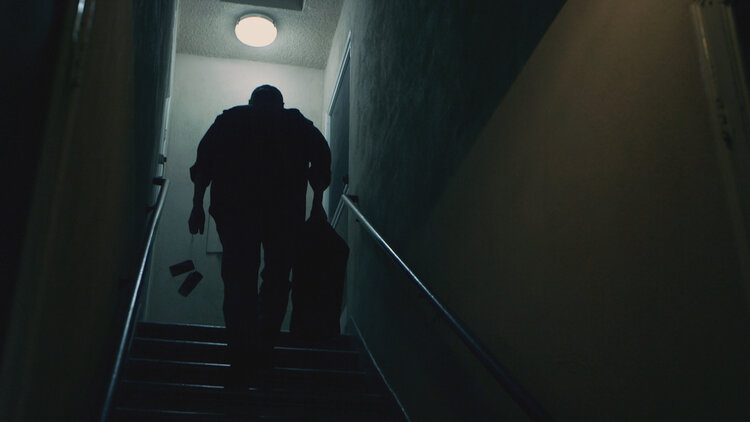The Hollywood Reporter Review of the Billy Mize Doc
A filmmaker profiles his grandfather, one of country music’s leading lights of the ’50s and ’60s, and the influential Central California honky-tonk scene that he helped to build.
He lent his guitar to Buck Owens when the newcomer was auditioning for a club. Merle Haggard’s first TV appearance was on his show. Waylon Jennings, Barbara Mandrell and Dean Martin, among many others, covered his songs. And no less a trendsetter than Elvis copied his sartorial style. Though he’s no household name, Billy Mize is a key figure in country music, and an affectionate documentary portrait shows that he had it all — smooth-as-silk voice, songwriting talent and good looks. But as Billy Mize and the Bakersfield Sound details, a series of exceedingly challenging personal setbacks put his career on a lower-altitude trajectory than anyone would have predicted.
Using a standard doc format that combines archival material with new talking-head interviews and vérité footage, directorWilliam J. Saunders has made an intimate and well-researched homage that explores the mysterious alchemy of stardom and the choices and happenstance that can make or break it. Though the filmmaker is Mize’s grandson — a relationship that’s revealed only in the closing credits — the film is no hagiography.
It is, however, filled with admirers, among them musicians Haggard, Willie Nelson, an exceptionally insightful Dave Alvin and the late Ray Price. After its world premiere at the L.A. Film Festival, the movie is sure to book more festival gigs. It could prove a smart theatrical pickup, too, drawing ovations for a tremendously likable central figure and his story of remarkable resilience, as well as its celebration of ever-popular Americana and roots music.
Given Saunders’ personal connection to his subject, it’s natural that his chief interest is the man rather than the titular sound. The engrossing movie presents a creditable capsule history of Bakersfield’s day in the pop-culture sun, and offers ample evidence of Mize’s gifts as a performer and crafter of songs. Still, it would have been nice to see more than one of his numbers in its entirety.
That full-song clip is a TV performance of Don Gibson’s “A Legend in My Time” — delivered with the understated emotion and apparent effortlessness that characterize all Mize’s shows and recordings excerpted in the film. The opening line, “If heartache brought fame,” is as apt a lead-in to his story as any.
Though he never stopped working — until his debilitating stroke at age 59 — Mize chose to focus on TV and local shows rather than the road in order to be with his family. In a pre-Internet age, when touring was essential to promotion, it was a crucial decision. Two key factors fueled it: the formative experience of being abandoned by his “rounder” of a biological father, and the miscarriage that his wife, Martha, suffered while he was on tour. More devastation was in store for the couple — all of it, unfortunately, emphasized with the movie’s heavily melodramatic score rather than by foregrounding more of Mize’s music.
With his stylistic versatility and much-covered gems such as “Who Will Buy the Wine” and “Don’t Let the Blues Make You Bad” under his songwriting belt, Mize became a major regional star, and was a founding figure in the Bakersfield music scene. Through well-chosen stills and the commentary of musicians and historians, Saunders traces the Central Valley city’s Dust Bowl roots and the thriving culture of honky-tonks that sprang up around its agriculture and oil industries.
The film also argues convincingly that compared with Nashville’s “official” country industry, Bakersfield’s rougher, more eclectic sound, with its strong component of Western swing, has had a more far-reaching impact. Long synonymous with Owens and Haggard, Bakersfield was, in the ’50s and ’60s, a wellspring of hitmakers.
National fame eluded Mize, and his career was cut short by the stroke that left him unable to speak, let alone sing. But during that Bakersfield heyday, he hosted a small slew of shows in Bakersfield and Los Angeles. Based on the evidence provided, he had the telegenic qualities of a wholesome Johnny Carson. The Academy of Country Music named him TV Personality of the Year three times in the mid-’60s.
The film’s present-day action revolves around an 80th birthday tribute concert in 2009, and Mize himself is a compelling interview subject. He speaks haltingly, having embarked on an intensive course of therapy, his spirit and resolve impressing even his speech pathologists. His humor and grit are evident in his brief but forceful answers. His silences speak volumes, too. So does the fact that Martha, no longer his wife, is still his good friend and sits beside him for an interview in the film.
Production companies: Old City Entertainment in association with the Country Music Hall of Fame
With: Billy Mize, Merle Haggard, Dave Alvin, Cliff Crofford, Willie Nelson, Ray Price
Director: William J. Saunders
Producer: William J. Saunders
Executive producers: Josh Ayers, Jesse Cuevas
Director of photography: Michael Louis Hill
Editors: David Nordstrom, Morgan R. Stiff, Jeff Cvitkovic
Composer: Amy Baer
No rating, 101 minutes

